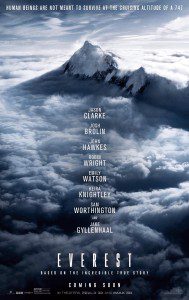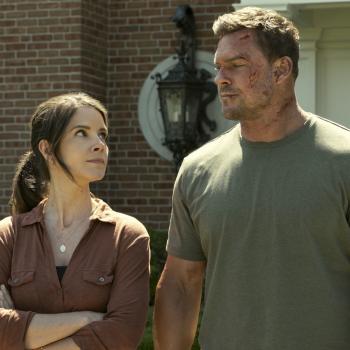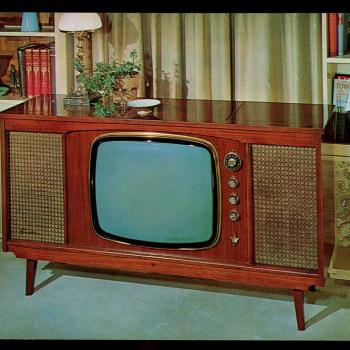Review of Everest, Directed by Baltasar Kormákur
Everest, like the award-winning 2013 film Gravity, is a movie about human courage and frailty in the face of nature’s crushing power. Pro tip for either film: See it in IMAX.
Everest is based on the true story of the 1996 climbing disaster recorded by journalist Jon Krakauer in his book, Into Thin Air. Krakauer, played by Michael Kelly, joins a company of climbers who have paid Adventure Consultants a small fortune to help them climb the world’s tallest mountain. Rob Hall (Jason Clarke) leads them, leaving at home his pregnant wife, Jan (Keira Knightley). Just the amount of effort it takes for the group to trek to base camp is impressive, let alone the months they spend adjusting to the altitude and climbing up the first few stretches of the mountainside, to practice and set up camps. The film underscores just how difficult climbing Everest is — humans can’t take in enough oxygen at the top to survive. “Our bodies will be literally dying,” Rob warns his paying customers. The day they reach summit must be carefully planned; they must reach the peak at 2 p.m. and not linger, so that they may return to more breathable altitudes by nightfall. But the climbers have also sacrificed so much time, money, and effort to be there. So when Doug Hansen (John Hawkes) — a mailman who has worked extra jobs and fundraised among schoolchildren to pay for this $65,000 trip — falls behind and wants to reach the top even though it’s well past 2 p.m., Rob gives in. Shortly after, a storm hits the mountain. He and Doug struggle to descend.
Everest is not a brilliant film. It is mostly straightforward in its approach. But that simplicity allows two things to stand out: the human story, and the mountain’s enormity. Krakauer asks each climber why they ascend. “I have kids,” says Doug, the mailman. “If they see a regular guy can follow impossible dreams, maybe they’ll do the same.” And viewers are treated to plenty of panoramic views, in which humans are small, struggling dots on the back of the vast, snow-clad rock.
The film lays bare the human hubris in even attempting to climb a mountain as mighty as Everest. Forget avalanches and frostbite. Its windswept heights can swell brains, fill lungs with fluid, or even trick minds into believing their bodies are warm, compelling climbers to strip their coats and scarves.
And the movie exposes the human greed of the Everest enterprise. The guides and the Nepali government make huge profits helping people undertake an endeavor they may not complete and that in fact may kill them. More than 250 people have died trying to scale Everest.
Indeed, the commercialization of Everest is what Krakauer blamed for the 1996 tragedy. The number of tourist-climbers led to delays that meant Rob and Doug were at the top far too late. Not much has changed since 1996. In recent years, guides have taken so many customers that there have been crowds at the summit.
To be sure, Everest, like Gravity, is also a movie about human sacrifice and courage. But while watching either movie, one can’t help thinking of another group of people, millennia ago, who wanted to reach the heavens and make a name for themselves — by building a tower. How little we have learned about our own pride.












